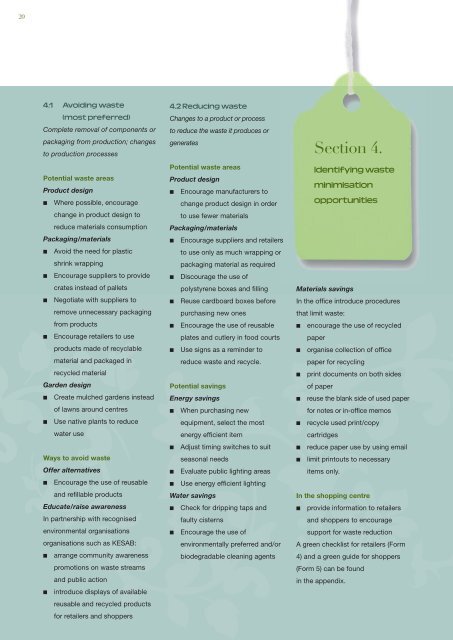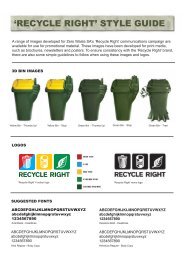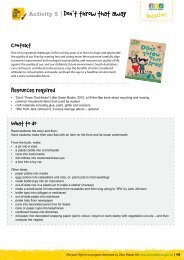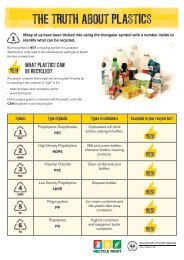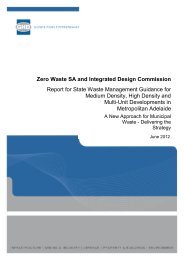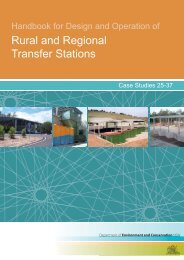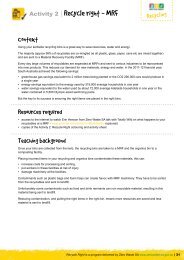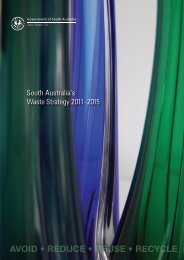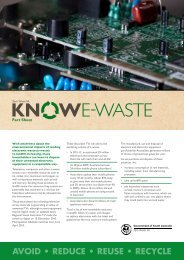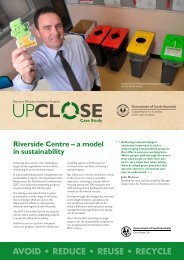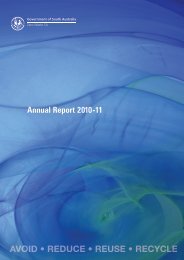Waste management and reduction guide for retail industry
Waste management and reduction guide for retail industry
Waste management and reduction guide for retail industry
- No tags were found...
Create successful ePaper yourself
Turn your PDF publications into a flip-book with our unique Google optimized e-Paper software.
204.1 Avoiding waste(most preferred)Complete removal of components orpackaging from production; changesto production processesPotential waste areasProduct design■ Where possible, encouragechange in product design toreduce materials consumptionPackaging/materials■ Avoid the need <strong>for</strong> plasticshrink wrapping■ Encourage suppliers to providecrates instead of pallets■ Negotiate with suppliers toremove unnecessary packagingfrom products■ Encourage <strong>retail</strong>ers to useproducts made of recyclablematerial <strong>and</strong> packaged inrecycled materialGarden design■ Create mulched gardens insteadof lawns around centres■ Use native plants to reducewater useWays to avoid wasteOffer alternatives■ Encourage the use of reusable<strong>and</strong> refillable productsEducate/raise awarenessIn partnership with recognisedenvironmental organisationsorganisations such as KESAB:■ arrange community awarenesspromotions on waste streams<strong>and</strong> public action■ introduce displays of availablereusable <strong>and</strong> recycled products<strong>for</strong> <strong>retail</strong>ers <strong>and</strong> shoppers4.2 Reducing wasteChanges to a product or processto reduce the waste it produces orgeneratesPotential waste areasProduct design■ Encourage manufacturers tochange product design in orderto use fewer materialsPackaging/materials■ Encourage suppliers <strong>and</strong> <strong>retail</strong>ersto use only as much wrapping orpackaging material as required■ Discourage the use ofpolystyrene boxes <strong>and</strong> filling■ Reuse cardboard boxes be<strong>for</strong>epurchasing new ones■ Encourage the use of reusableplates <strong>and</strong> cutlery in food courts■ Use signs as a reminder toreduce waste <strong>and</strong> recycle.Potential savingsEnergy savings■ When purchasing newequipment, select the mostenergy efficient item■ Adjust timing switches to suitseasonal needs■ Evaluate public lighting areas■ Use energy efficient lightingWater savings■ Check <strong>for</strong> dripping taps <strong>and</strong>faulty cisterns■ Encourage the use ofenvironmentally preferred <strong>and</strong>/orbiodegradable cleaning agentsSection 4.Identifying wasteminimisationopportunitiesMaterials savingsIn the office introduce proceduresthat limit waste:■ encourage the use of recycledpaper■ organise collection of officepaper <strong>for</strong> recycling■ print documents on both sidesof paper■ reuse the blank side of used paper<strong>for</strong> notes or in-office memos■ recycle used print/copycartridges■ reduce paper use by using email■ limit printouts to necessaryitems only.In the shopping centre■ provide in<strong>for</strong>mation to <strong>retail</strong>ers<strong>and</strong> shoppers to encouragesupport <strong>for</strong> waste <strong>reduction</strong>A green checklist <strong>for</strong> <strong>retail</strong>ers (Form4) <strong>and</strong> a green <strong>guide</strong> <strong>for</strong> shoppers(Form 5) can be foundin the appendix.


